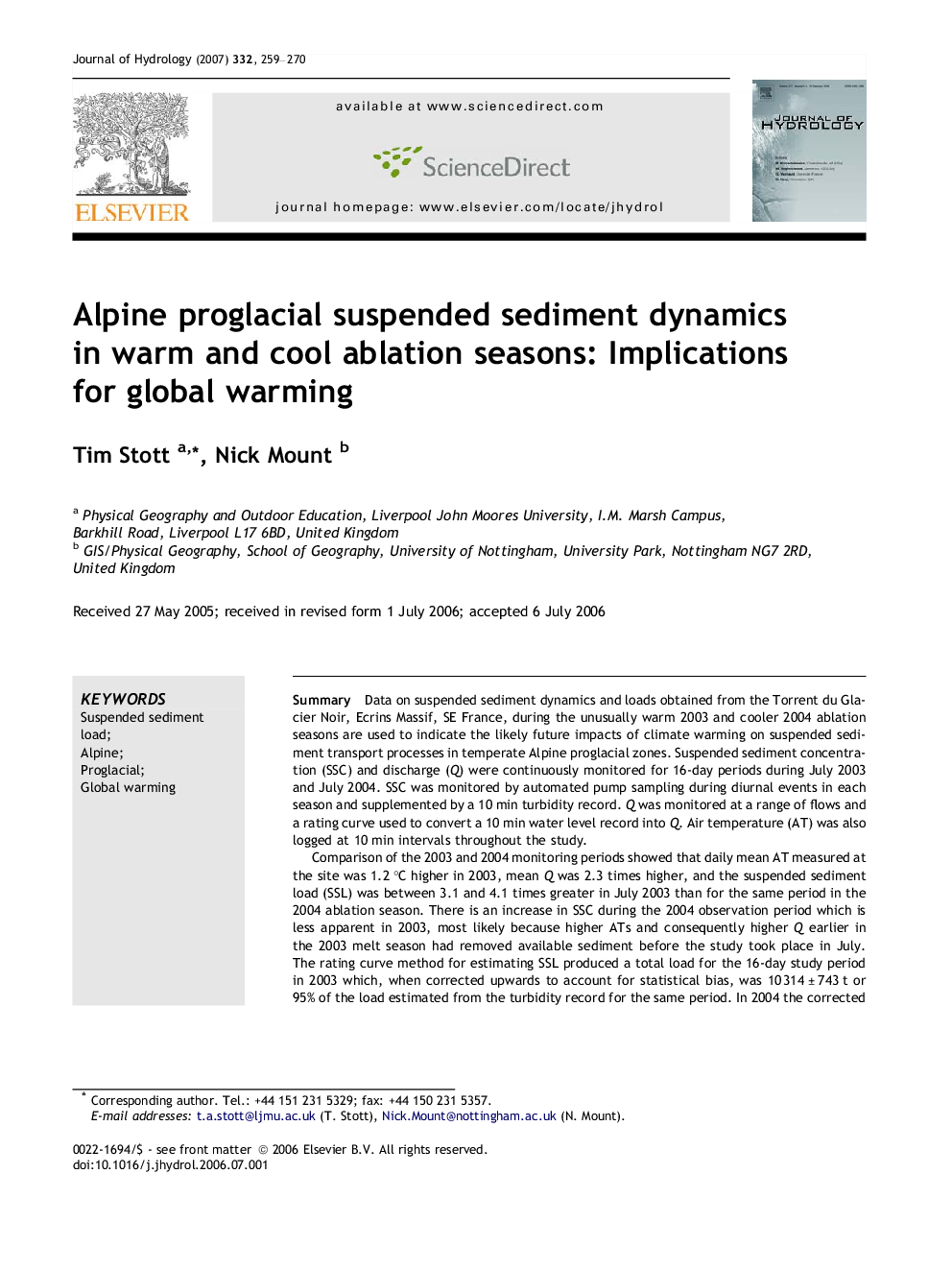| کد مقاله | کد نشریه | سال انتشار | مقاله انگلیسی | نسخه تمام متن |
|---|---|---|---|---|
| 4580315 | 1630150 | 2007 | 12 صفحه PDF | دانلود رایگان |

SummaryData on suspended sediment dynamics and loads obtained from the Torrent du Glacier Noir, Ecrins Massif, SE France, during the unusually warm 2003 and cooler 2004 ablation seasons are used to indicate the likely future impacts of climate warming on suspended sediment transport processes in temperate Alpine proglacial zones. Suspended sediment concentration (SSC) and discharge (Q) were continuously monitored for 16-day periods during July 2003 and July 2004. SSC was monitored by automated pump sampling during diurnal events in each season and supplemented by a 10 min turbidity record. Q was monitored at a range of flows and a rating curve used to convert a 10 min water level record into Q. Air temperature (AT) was also logged at 10 min intervals throughout the study.Comparison of the 2003 and 2004 monitoring periods showed that daily mean AT measured at the site was 1.2 °C higher in 2003, mean Q was 2.3 times higher, and the suspended sediment load (SSL) was between 3.1 and 4.1 times greater in July 2003 than for the same period in the 2004 ablation season. There is an increase in SSC during the 2004 observation period which is less apparent in 2003, most likely because higher ATs and consequently higher Q earlier in the 2003 melt season had removed available sediment before the study took place in July. The rating curve method for estimating SSL produced a total load for the 16-day study period in 2003 which, when corrected upwards to account for statistical bias, was 10 314 ± 743 t or 95% of the load estimated from the turbidity record for the same period. In 2004 the corrected SSC–Q rating curve estimate was 2504 ± 126 t while the estimate from the turbidity record was 743 ± 112 t though a more sensitive turbidity sensor produced a higher estimate of 3474 ± 302 t. While the different SSL estimation methods in 2004 are not in perfect agreement, the contrast between the two seasons is nevertheless very clear, and is largely attributed to a mean monthly regional air temperature increase of ∼2.0 °C over most of the 2003 ablation season. The 2003 SSL record, compared with 2004, can be used to gain an insight into the impact of higher air temperatures resulting from global warming on SSL. Such changes in SSLs have important implications for sediment transfer from mountain to piedmont zones, for stream ecology, for downstream channel stability and flood risk, and for the hydro-electric industry.
Journal: Journal of Hydrology - Volume 332, Issues 3–4, 15 January 2007, Pages 259–270